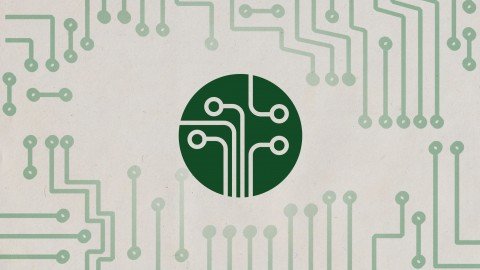Electronics S1W1 Basic Terminology And Schematic Symbols
- 02.02.2023
- 30

Last updated 2/2017
MP4 | Video: h264, 1280x720 | Audio: AAC, 44.1 KHz
Language: English | Size: 686.90 MB | Duration: 2h 54m
Intro to Electronics: Learn about bonding, conductors, insulators, terminology & schematic symbols (Semester 1, Week 1)
What you'll learn
You will be able to identify atoms as conductors, semiconductors or insulators.
You will know why electrical current is the flow of free electrons.
You will be introduced to schematic diagrams and and many schematic symbols, and be able to identify several schematic symbols.
Requirements
There are no prerequisites for this course. Math is limited to the ability to add, subtract, multiply and divide whole numbers, fractions and decimals using a calculator.
Description
The course: This course is Week One of an Eight Week section titled "DC Electronics", which is the first semester of an eight semester program. The main topics for this course are: 1. Starting at the atomic level, or, why we need to understand how electricity and electronics are driven by electrons. 2. The three things that make electronics work: ......Conductors ......Insulators ......Semiconductors 3. What is electrical/electronic current? 4. Intro to basic circuit terminology. 5. Overview of many schematic symbols The Semester: (This course is week 1 of this eight week semester.) These are the classes for this eight week semester: 1. Direct Current at the Molecular Level (This class) 2. Electrical Units; Volts, Ohms, Amps and Watts 3. Measuring Equipment 4. Basic DC Circuits; Voltage, Current, Resistance and Power 5. DC Circuit Analysis; Kirchhoff's Laws; Determining Resistance, Voltage, Current and Power in Series and Parallel Resistive Circuits 6. Resistors, Potentiometers, and Rheostats 7. Cells and Batteries 8. Magnetism and Magnetic Devices; Selonoids and DC Motors The Program: This course is part of the first semester, DC Electronics. Future semesters will include AC Electronics, Solid State Electronics (Transistors, FETs, MOSFETs and JFETs), Transistor and OpAmp theory, Communications Theory and Digital Electronics.
Overview
Section 1: Electricity at the Molecular Level
Lecture 1 Electricity at the Molecular Level
Lecture 2 Charge and Bonding
Section 2: Conductors, Insulators and Semiconductors
Lecture 3 Conductors, Insulators and Semiconductors, Part 1 of 2
Lecture 4 Electronics: Conductors, Insulators and Semiconductors
Section 3: Circuit Terminology and Schematic Symbols
Lecture 5 Basic Circuit Terminology; The Anatomy of a Flashlight
Lecture 6 Schematic Symbols; Part 1 of 2
Lecture 7 Schematic Symbols; Part 2 of 2
Section 4: Introduction to Electronics Labs
Lecture 8 Introduction to Electronics Labs, Part 1 of 3
Lecture 9 Introduction to Electronics Labs, Part 2 of 3
Lecture 10 Introduction to Electronics Labs, Part 3 of 3
This course is appropriate for teens through adults that desire to understand, analyze, design, repair and construct electronic circuits or projects.,People who take electronics courses often go on to become electronics hobbyists, robotics hobbyists, electronics engineers, electronics test technicians or electronics repair technicians.
Homepage
https://www.udemy.com/course/electronics-week-01/Fikper
whxze.E.S.B.T.A.S.S.rar.html
Rapidgator
whxze.E.S.B.T.A.S.S.rar.html
Uploadgig
whxze.E.S.B.T.A.S.S.rar
NitroFlare
whxze.E.S.B.T.A.S.S.rar
Please Help Me Click Connect Icon Below Here and Share News to Social Network | Thanks you !